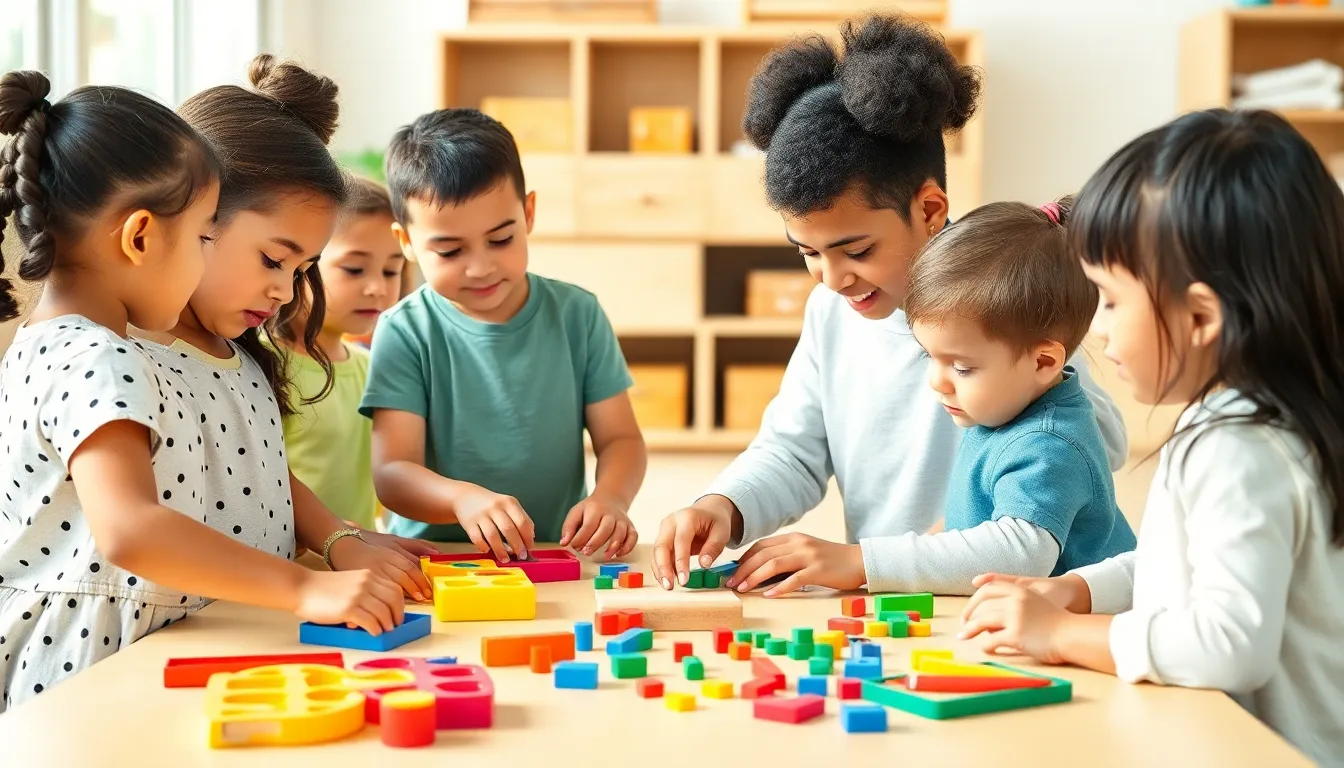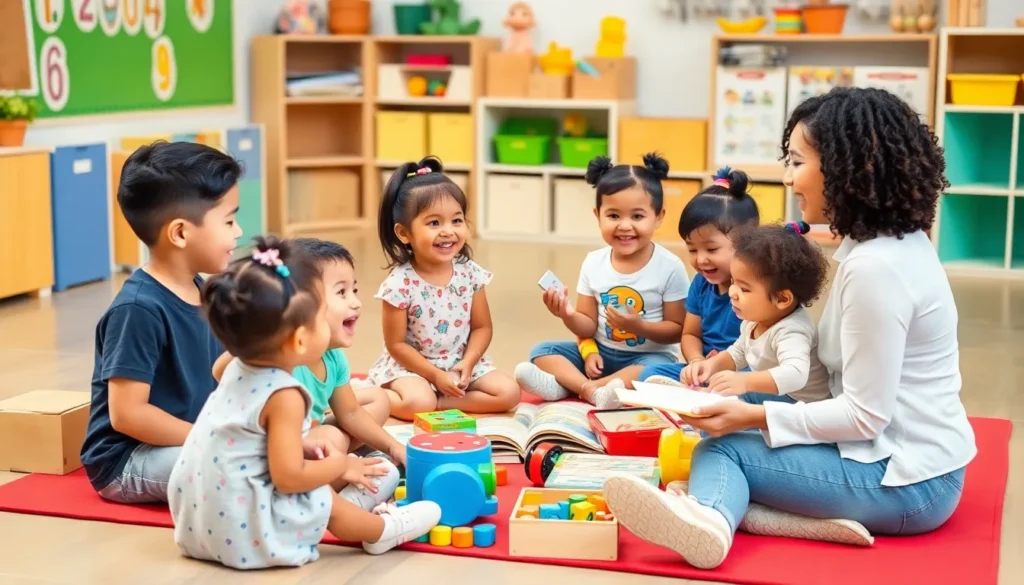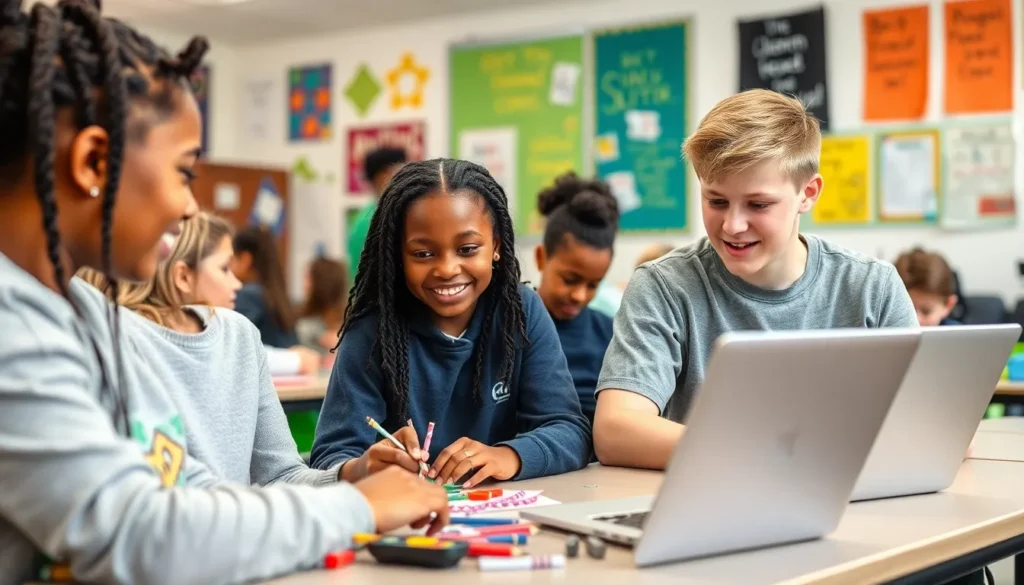Table of Contents
ToggleIn a world where traditional classrooms often feel like a scene from a sitcom gone wrong, alternative education models burst onto the stage like the quirky sidekick everyone loves. These innovative approaches challenge the status quo, offering fresh perspectives that cater to diverse learning styles and needs. Who says education has to be a one-size-fits-all affair?
Overview of Alternative Education Models
Alternative education models present various strategies addressing the limitations of traditional education systems. These programs often focus on individualized learning experiences that cater to each student’s unique needs. Montessori, Waldorf, and project-based learning are some notable examples of these models.
Montessori education encourages self-directed learning and hands-on experiences. Students work at their own pace, fostering independence and critical thinking. Waldorf education emphasizes creativity and artistic expression, integrating academics with practical activities. This approach nurtures the development of the whole child.
Project-based learning promotes collaboration and real-world problem solving. Students typically engage in projects that require in-depth exploration and critical analysis. These projects often result in tangible outcomes, making learning relevant and engaging.
Online education also represents an alternative model, offering flexibility and accessibility for diverse learners. With the rise of technology, students can access resources and courses tailored to their interests from anywhere. Hybrid models combine traditional and online methods, allowing for a blended learning experience.
Unschooling takes a different approach, enabling learners to direct their own education based on personal passions and interests. This model removes the rigid structure of standard curricula and emphasizes exploration and curiosity.
Each education model addresses various learning styles, ensuring that multiple approaches exist to fit diverse needs. Educational institutions increasingly adopt these alternatives to create an inclusive environment. Students thrive when provided with options that resonate with their strengths.
Types of Alternative Education Models

Various alternative education models offer unique methods to support diverse learning styles. These approaches allow students to thrive outside traditional classroom constraints.
Montessori Method
The Montessori method promotes self-directed learning through hands-on activities. Children engage in meaningful work at their own pace, developing independence and critical thinking skills. Mixed-age classrooms encourage peer learning, fostering collaboration and social skills. Educators guide rather than direct, allowing students to explore interests deeply. This model nurtures intrinsic motivation, making learning an enjoyable experience.
Waldorf Education
Waldorf education focuses on creativity and imagination, integrating arts into the core curriculum. Developmentally appropriate practices align with children’s ages, emphasizing experiential learning. Teachers cultivate strong relationships, allowing for a supportive learning atmosphere. The curriculum incorporates storytelling, music, and visual arts, fostering holistic development. Students engage deeply with subjects, building a strong foundation for future learning.
Unschooling
Unschooling allows learners freedom to pursue their interests without a structured curriculum. This approach values curiosity and exploration, enabling personalized educational journeys. Students take the lead, learning through real-life experiences and spontaneous exploration. Parents serve as facilitators, guiding their children’s passions rather than dictating content. This model encourages critical thinking and self-motivation, nurturing lifelong learners.
Online Learning Environments
Online learning environments provide flexible, accessible educational options for learners of all ages. Various platforms offer courses tailored to individual needs, allowing for diverse learning paths. Interaction occurs through forums, videos, and assignments, fostering community among students. Educators use innovative technology to engage learners in interactive ways. This model supports varied learning preferences, enhancing the overall educational experience.
Benefits of Alternative Education Models
Alternative education models provide unique advantages that address various learners’ needs. These approaches lead to enhanced educational experiences and foster personal growth.
Personalized Learning
Students experience personalized learning through alternative education models. Individualized instruction aligns with each learner’s strengths and interests. Schools employing these models often utilize assessments to tailor curricula. This approach helps students set personal goals and track their progress. Teachers adapt lessons based on feedback, tailoring experiences. For instance, a student interested in science may explore biology through hands-on experiments. Such customization improves engagement and motivation.
Flexibility and Adaptability
Flexibility and adaptability characterize alternative education models. Learners benefit from customized schedules and diverse teaching methods. Traditional school structures often restrict learning environments, while alternative models promote fluidity. Students can learn in various settings, including online platforms, co-ops, or outdoor classrooms. For example, project-based learning shifts focus on real-world applications, encouraging exploration. This flexibility accommodates different learning paces, allowing students to thrive without pressure.
Focus on Creativity and Critical Thinking
Creativity and critical thinking reside at the core of alternative education models. These methods prioritize innovative thinking and problem-solving skills. In traditional settings, rote memorization often stifles creativity. However, models like Waldorf and Montessori encourage artistic expression and hands-on experiences. Collaboration on projects promotes teamwork and critical analysis. Students engage in tasks requiring them to devise solutions to real problems. Such an emphasis on creative thinking nurtures lifelong skills essential for success.
Challenges of Alternative Education Models
Alternative education models face several significant challenges. These hurdles can impede their widespread acceptance and implementation.
Societal Acceptance
Societal acceptance often influences the success of alternative education models. Many individuals still favor conventional schooling, believing it offers the best foundation for academic achievement. Stereotypes regarding non-traditional methods persist, leading to skepticism about their effectiveness. Parents may worry that alternative approaches lack proven success, which affects enrollment in such programs. In addition, educational policymakers may prioritize familiar systems over innovative solutions, limiting broader adoption. Building trust and awareness around alternative education requires effective communication of their benefits and success stories.
Funding and Resources
Funding and resources present critical challenges to alternative education models. Many of these programs rely on grants, donations, or tuition, which can create financial instability. Limited access to financial support inhibits the growth of innovative curricula that require dedicated resources. Publicly funded alternatives often compete with traditional schools for funding, leading to budget constraints. Resource allocation can also impact the quality of education offered, limiting access to specialized staff or materials. Establishing sustainable financial models is essential for the long-term viability of alternative education options.
Standardization Issues
Standardization issues arise when comparing alternative education models with traditional education systems. Many alternative programs lack alignment with state testing requirements, eliciting concern from educators and parents. This disconnect can lead to a perception that alternative education does not provide adequate preparation for higher education or employment. Educators often struggle to assess student progress uniformly, complicating evaluations. Additionally, varied curricula and teaching methods make it challenging to establish benchmarks for success. Finding a balance between innovation and assessment is crucial for enhancing the credibility of alternative education models.
Alternative education models are reshaping the landscape of learning by prioritizing individual needs and fostering creativity. These innovative approaches not only cater to diverse learning styles but also encourage critical thinking and problem-solving skills essential for success in a rapidly changing world.
While challenges like societal acceptance and funding remain, the potential benefits of personalized learning and flexibility cannot be overlooked. As more educational institutions embrace these alternatives, the conversation around effective education will continue to evolve. The future of learning lies in recognizing that every student deserves an educational experience tailored to their unique strengths and interests.




